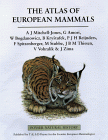
Sites
Where to Watch Birds in Latvia!
LIST OF LATVIAN BIRD SPECIES
Stand: August 2000

Sites
Where to Watch Birds in Latvia!
LIST OF LATVIAN BIRD SPECIES
Stand: August 2000
Contact:
Agris Celmins
With an outline like a nestling, Latvia is on the east coast of the Baltic Sea. Flanked by Estonia to the north and Lithuania to the south, it stretches eastwards to Russian and Belarus borders. It is, largely, a flat country, with a rather monotonous agricultural landscape, but it also has wide forests and wetlands of various types. Being an East European country, albeit slightly to the north, it has an impressive range of species mixed up in a cocktail that is rather different from that of Western Europe. A few examples of the notable breeding species are Black Stork (Schwarzstorch), Lesser Spotted Eagle (Schreiadler), Ural Owl (Habichtskauz), Blyth’s Reed Warbler (Teichrohrsänger), Greenish Warbler (Grünlaubsänger), Red-breasted Flycatcher (Zwergschnäpper), Thrush Nightingale (Sprosser) and Common Rosefinch (Karmingimpel); all these species are fairly common throughout the country. Some uncommon “exotic” species also breed, for instance, the Little Bittern (Zwergdommel), Short-toed Eagle (Schlangenadler), Great Snipe (Doppelschnepfe), Marsh Sandpiper (Teichwasserläufer) and Terek Sandpiper (Terekwasserläufer), Whiskered Tern (Weißbart-Seeschwalbe), Pygmy Owl (Sperlingskauz) and Tengmalm’s Owl, Citrine Wagtail (Zitronenstelze) and Parrot Crossbill (Kiefernkreuzschnabel).
It is not only the location that makes it different from other countries. Ineffective agriculture and forestry during Soviet rule favoured many bird species. By way of illustration, the Corncrake (Wachtelkönig) remains widespread with no less than 26,000 breeding pairs, the Common Crane (Kranich) is a rather common breeder in bogs and wet forest clearings, and a number of species of woodpeckers maintain good populations. The White-backed Woodpecker (Weißrückenspecht), for instance, is estimated to be 1,500 breeding pairs, but the Middle Spotted Woodpecker (Mittelspecht) is increasing and expanding its range. The Red-backed Shrike (Neuntöter) is common - many can be seen perching on wires and bush tops along the roads. The number of White Stork (Weißstorch) is also imposing - imagine 10,500 pairs for a territory of only 65,000 sq/km. But dont be fooled into false optimism by this portrait. Times are changing - forest felling intensifies and agriculture may soon follow western models. Will the bird life remain unaffected? Definitely not, the only question is how seriously?
In spring and autumn many migrating birds pass over. Two bottle-necks in the western part of Latvia - Kolka and Pape, concentrate the largest numbers. Massive movement of divers and sea ducks take place along the west coast in spring. Grey geese (Graugans)passage happens twice a year, when many stop at our wetlands to rest. One of the most interesting wintering species is the Stellers’s Eider (Eiderente). It is not common, but currently one wintering site is known on the west coast. To conclude, Latvia is, without a doubt an interesting country for birdwatchers, and there are still lots of things to discover.
The Latvian Ornithological Society currently has several hundred members. Birdwatching is not yet a popular outdoor activity in the country, and people with binoculars are rarities in themselves.
Useful Information Latvian Ornithological Society P.O. Box 1010, LV-1050 Riga, Latvia. Phone +371-7221580.
“Until recently, Latvia was unknown territory to most Europeans. Before the 1980s, most ornithologists and bird conservationists certainly knew very little about it. They have only just begun to realize that Latvia is wonderfully rich in bird fauna, including internationally significant populations of many species. The Latvian Ornithological Society (Latvijas Ornitologijas Biedriba LOB) exists to further the study and conservation of birds, but it is starved of resources and short of members. It needs support.” NB. The number of breeding pairs for several species is underestimated or overstated (old data). There is a serious mistake about the Red-throated Diver. It has not bred in Latvia since the end of 1950’s. Breeding of Aquatic Warbler is overstated. Actually, there is only one confirmed breeding record in 1940. It is virtually impossible to find it. The address for the Latvian Ornithological Society is wrong. This probably is most serious mistake.
“From here you can access information about several Latvian birdwatching sites. Actually there are many more sites where to go, but not all are acknowledged, and it depends on what are you looking for. Common and widespread species can be found without going to special places. The sites described are more or less special, that can offer (but never guaranty) higher species diversity than elsewhere and better chances to find some unusual birds. This page is under construction and currently you will find only few maps and bird lists for each site (only selected species). Any urgent information can be answered separately, if you ask me by e-mail using the address below.”
| Birding Links - Links füer Birders |

|
 NABU |
 RSPB |
 Berlin |
 Das Beste |
 Birdguides |
 The Fat Birder |
 Birder Shop |
 Schwalbennest |
 Cats! |
  British Birds British Birds |
 The German Week |
 ..... und AMAZON.DE
..... und AMAZON.DE


Bestell Svensson's Der neue Kosmos Vogelführer Heute!